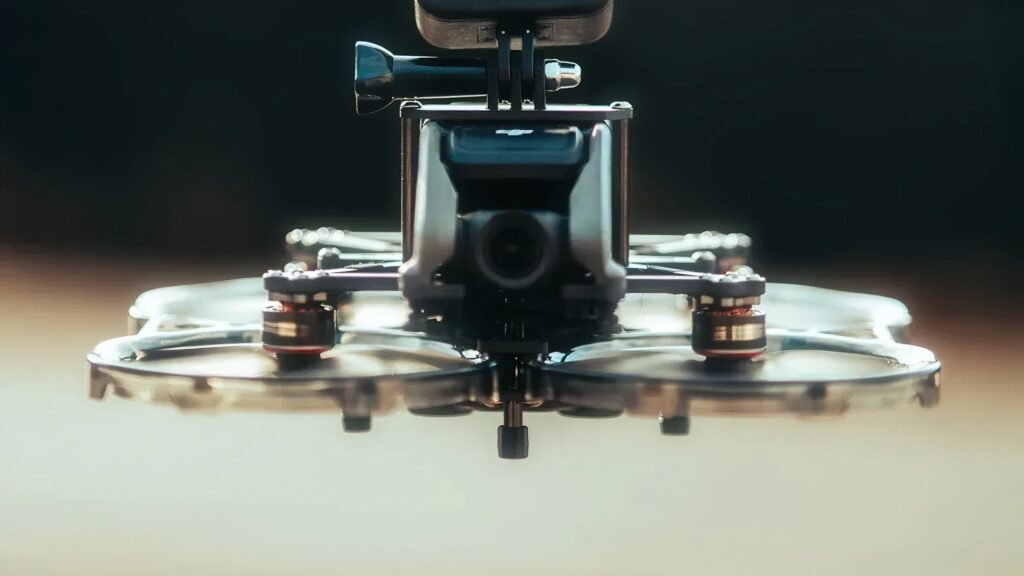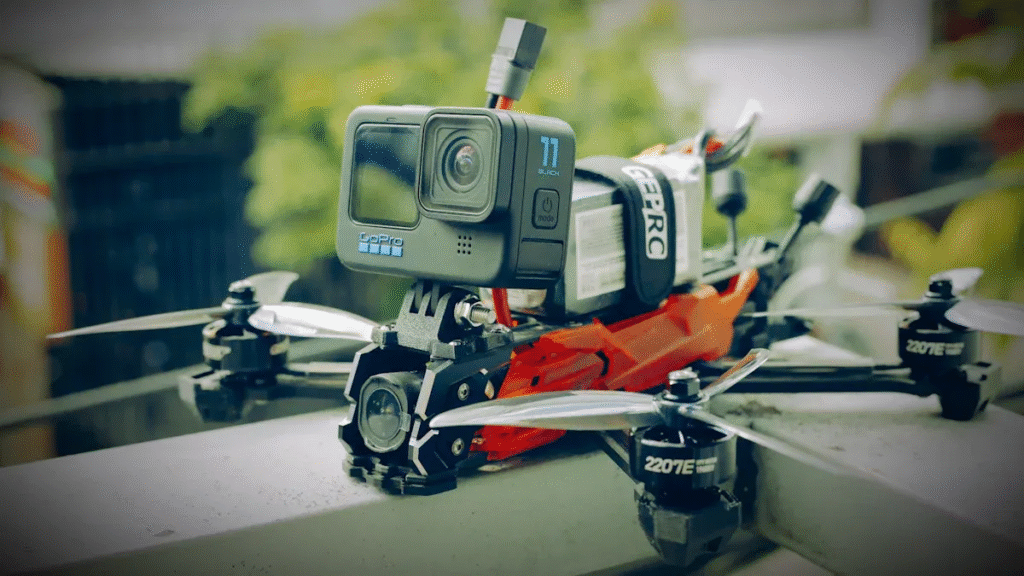You will often find that a 400W brushless motor features a pole count anywhere from 4 to 40, with 8 poles frequently appearing in standard designs. However, recent motor series, such as those from Neumotors, show that 26 poles and 24 slots have become typical for this class. Pole count directly shapes how your motor performs, affecting both speed and torque. Your choice of pole configuration determines if the motor suits your application’s unique demands. Retek Motion’s expertise ensures you receive guidance based on the latest industry standards.
Key Takeaways
- Pole count in a 400W brushless motor affects speed, torque, and smoothness of operation.
- Lower pole counts offer higher speeds but less torque; higher pole counts provide more torque and better control at low speeds.
- Choosing the right pole count depends on your application’s needs, such as speed, torque, and noise sensitivity.
- Matching motor voltage and current to your power supply improves efficiency and prevents overheating.
- Always check motor size and datasheets to ensure proper fit and performance for your project.
400W Brushless Motor Pole Count
Definition of Pole Count
Pole count describes the total number of magnetic poles on the rotor of a brushless motor. Each pole consists of either a north or a south magnetic field. For example, a 12-pole motor contains 6 north poles and 6 south poles, which equals 6 pole pairs. You can determine the pole count by counting the permanent magnets on the rotor. In some cases, you may need to count the stator windings to find the number of pole pairs, especially when the magnets are not visible. Pole count plays a critical role in how your 400W brushless motor performs. It directly affects speed, torque, and efficiency.
Tip: Remember, pole count is not the same as the number of stator slots. Always focus on the rotor’s magnets when identifying pole count.
Typical Pole Count Range
You will find that most 400W brushless motors feature a pole count between 4 and 40. The most common configuration is 8 poles, but some advanced models use 26 poles or more. Manufacturers select the pole count based on the desired balance between speed and torque. For instance, a lower pole count allows for higher speeds, while a higher pole count increases torque output. You can also estimate the pole count using the formula:
Pole Count = (120 × Max Frequency in Hz) / Max RPM
This calculation helps you match the motor’s electrical characteristics to your application.
Common Configurations
Manufacturers like Retek Motion design 400W brushless motors with a range of pole counts to suit different needs. Here are some typical configurations you might encounter:
| Pole Count | Pole Pairs | Typical Use Case |
|---|---|---|
| 4 | 2 | High-speed, low-torque applications |
| 8 | 4 | General-purpose, balanced performance |
| 12 | 6 | Higher torque, moderate speed |
| 26 | 13 | Precision, high-torque, low-speed tasks |
When you choose a 400W brushless motor, consider your application’s requirements. Retek Motion, for example, evaluates factors such as torque needs, desired speed, cost, available space, and noise sensitivity. Higher pole counts deliver smoother operation and more torque, which is ideal for applications like robotics or industrial automation. Lower pole counts favor high-speed uses, such as fans or pumps.
Note: Always check the manufacturer’s datasheet or consult with experts to ensure you select the right pole count for your specific project.
Performance Impact
Speed and Torque
Pole count plays a key role in how your motor delivers speed and torque. In a 400W brushless motor, you often see 8 poles, which means 4 pole pairs. For brushless DC motors, speed depends on the battery voltage, the motor’s KV rating, and the controller settings. Pole count does not directly limit the maximum RPM. Instead, you control speed through the electronic speed controller (ESC) and voltage. For example, a typical 400W brushless motor with 8 poles can reach a rated speed of 3000 rpm and a no-load speed of 3600 rpm. If you need more torque at lower speeds, a higher pole count helps. Gearboxes can also reduce speed and boost torque, showing that speed management relies on both motor design and external components.
Tip: If your application needs high torque at low speeds, consider motors with more poles or use a gearbox for better performance.
Efficiency
You want your motor to run efficiently, especially in demanding tasks. Motors with higher pole counts often show better efficiency at lower speeds. This happens because more poles increase the switching frequency, which improves torque and efficiency in slow-moving applications. Motors with fewer poles may struggle below 150 RPM, losing efficiency due to low switching resolution. However, motors with very high pole counts might need gear reductions or specific wheel sizes to stay efficient. You should also think about heat management and controller size, as these factors affect overall efficiency and performance.
- Higher pole counts: Better efficiency at low speeds, more torque, but may need gear reduction.
- Lower pole counts: Higher speeds, less efficient at low RPM, but simpler control.
Application Suitability
Choosing the right pole count ensures your motor fits your application. Here’s how different pole counts match common uses:
| Pole Count | Motor Speed Characteristics | Vibration Amplitude | Suitable Applications |
|---|---|---|---|
| 2 Poles | Higher speed | Lower amplitude | High-frequency vibration tasks, low amplitude needs |
| 4 Poles | Medium speed | Moderate amplitude | Mining, metallurgy, construction, food processing, medical care, powder screening |
| 6 Poles | Lower speed | Higher amplitude | Food production lines (e.g., French fries), applications needing strong vibration |
A 400W brushless motor with 8 poles offers smooth operation and strong torque control, making it ideal for electric vehicles and industrial equipment. You benefit from high efficiency, low noise, and adaptability to gearboxes, which helps in harsh environments. Always match the pole count to your speed, torque, and application needs for the best results.
400W Brushless Motor Specifications

Voltage and Current
You need to select the right voltage and current ratings to ensure safe and efficient operation. Most 400W brushless motors run at 24V or 48V, but some models support up to 96V. As voltage increases, the required current decreases. This relationship helps you manage heat and improve efficiency. For example, a 48V motor typically draws about 10.6A, while a 24V motor draws around 21A for the same power output. The table below shows standard voltage and current ratings:
| Rated Voltage (V DC) | Rated Current (A) |
|---|---|
| 24 | 20 – 21.3 |
| 48 | 10.4 – 10.6 |
| 72 | 7.1 |
| 96 | 5.3 |

You should always match the voltage and current of your motor to your power supply and controller. This step protects your system from overheating and ensures stable performance.
Note: Higher voltage options reduce current, which lowers heat and improves efficiency. This choice also affects controller compatibility and long-term durability.
Speed and Torque Ratings
A 400W brushless motor delivers reliable speed and torque for many applications. Most models offer a rated speed of 3000 rpm and a no-load speed of 3600 rpm. Rated torque usually falls between 1.25 Nm and 1.3 Nm, with peak torque reaching up to 2.54 Nm. The following table summarizes typical performance values:
| Parameter | Value |
|---|---|
| Rated Power | 400 W |
| Rated Torque | 1.3 Nm |
| Max Torque | 2.54 Nm |
| Rated Speed | 3000 rpm |
| No-load Speed | 3600 rpm |
You must consider both speed and torque when choosing a motor. Applications that require high torque at low speeds may benefit from motors with higher pole counts or gearboxes. Retek Motion offers models with different pole counts to help you match your needs.
Physical Dimensions
Physical size and mounting options play a key role in installation. Most 400W brushless motors have frame sizes between 53.5 mm and 110 mm, with shaft diameters ranging from 6 mm to 22 mm. The table below lists common dimensions:
| Motor Model / Series | Frame Size (mm) | Shaft Diameter (mm) | Notes |
|---|---|---|---|
| Oriental Motor BLV Series | 104 – 110 | 14 (round), 22 (gearhead) | Brushless DC motor with speed control system |
| NeuMotors 2000 Series | ~53.5 (OD) | 6 | Outrunner motor, length ~25 mm |
- You should check the available space in your system before selecting a motor.
- Always mount the motor on a flat, strong surface to prevent vibration and shocks.
- Maintain at least 10 mm spacing between the controller and other devices for safe operation.
Tip: Matching the motor’s physical dimensions to your application ensures reliable performance and easy installation. Retek Motion provides detailed datasheets to help you make the right choice.
You now understand that pole count shapes speed, torque, and vibration in motors. When you select a motor, always weigh pole count with other specifications like voltage, current, and load requirements. This approach ensures your equipment runs efficiently and meets operational demands. For the best results, review datasheets and manuals or consult with motor experts. Their guidance helps you match your application needs and improves reliability.
FAQ
What does pole count mean in a brushless motor?
Pole count refers to the number of magnetic poles on the rotor. You can identify it by counting the magnets. Pole count affects speed, torque, and efficiency. Higher pole counts usually deliver more torque and smoother operation.
How do I choose the right pole count for my application?
You should match pole count to your needs. For high-speed tasks, select a lower pole count. For high-torque or precise control, choose a higher pole count. Always review your application’s speed and torque requirements before deciding.
Does a higher pole count always mean better performance?
Not always. Higher pole counts improve torque and low-speed efficiency, but they may reduce maximum speed. You need to balance pole count with other specifications like voltage, current, and controller compatibility.
Can I use a 400W brushless motor for electric vehicles?
Yes, you can use a 400W brushless motor in small electric vehicles, robots, or e-bikes. Check the pole count, voltage, and torque to ensure the motor meets your performance needs. Consult datasheets or experts for best results.



